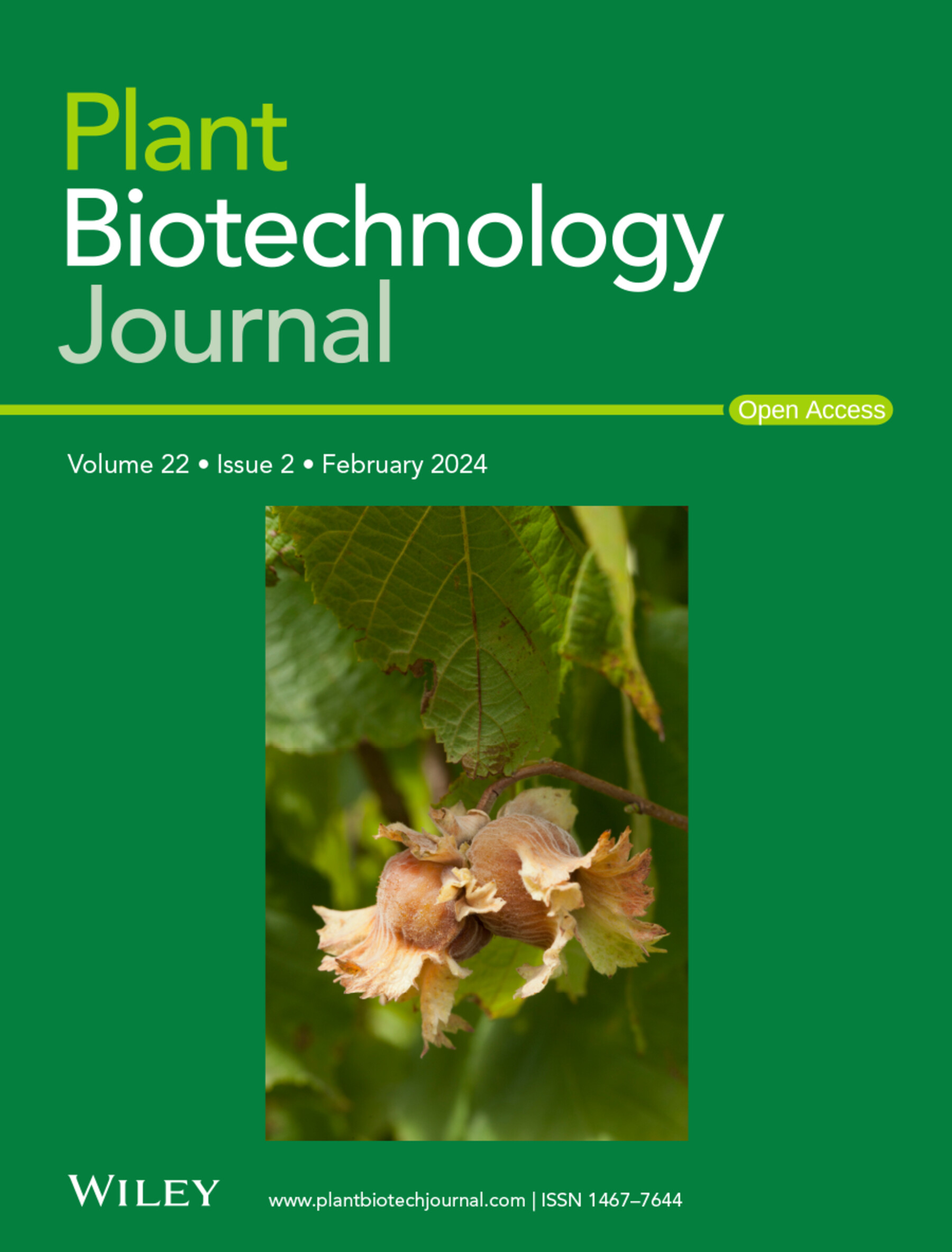配子表达蛋白1突变诱导玉米母系单倍体
IF 10.1
1区 生物学
Q1 BIOTECHNOLOGY & APPLIED MICROBIOLOGY
引用次数: 0
摘要
摘要以单倍体诱导(haploid induction, HI)为基础的双单倍体(double haploid, DH)技术是提高作物育种效率的重要手段,已成功应用于多种植物。虽然许多HI相关基因已经通过不同的策略被鉴定出来,但HI的遗传基础和分子机制仍然不完全清楚。在这项研究中,我们提出了一种通过靶向诱变玉米配子表达蛋白1 (ZmGEX1)基因来诱导单倍体后代的新系统。结果表明,zmgex1杂合植株(zmgex1+/−)作为母本通过自花授粉和异花授粉诱导母本单倍体,平均诱导率为1.34%。这表明单倍体后代完全来自母系,携带母系基因组。我们还发现,ZmGEX1在雌花颖花和花药中都有表达,定位于细胞质、细胞核和内质网。虽然zmgex1等位基因在雌性配子体中的传递效率降低,但zmgex1不影响胚囊发育,但影响受精。我们认为精子和卵子细胞核融合的缺陷可能导致单倍体的形成。最后,对ZmGEX1基因在玉米育种中的应用前景进行了展望。总之,本研究确定了ZmGEX1是一个参与母体HI的新基因,并为育种改进提供了有希望的策略。本文章由计算机程序翻译,如有差异,请以英文原文为准。
Maternal haploid induction in maize via mutation of Gamete Expression protein 1
SummaryDoubled haploid (DH) technology, based on haploid induction (HI), is a crucial tool in enhancing crop‐breeding efficiency and has been successfully applied in various plant species. While many HI‐related genes have been identified using diverse strategies, the genetic basis and molecular mechanisms underlying HI remain incompletely understood. In this study, we present a novel system for inducing haploid offspring through targeted mutagenesis of the Zea mays Gamete Expression protein 1 (ZmGEX1 ) gene in maize. Our findings reveal that zmgex1 heterozygous plants (zmgex1 +/− ) induce maternal haploids via self‐ and cross‐pollination as the female parent, with an average rate of 1.34%. This indicates that the haploid progeny is exclusively maternal in origin, carrying the maternal genome. We also demonstrate that ZmGEX1 is expressed in both female spikelets and anthers, localizing to the cytoplasm, nucleus and endoplasmic reticulum. Although the transmission efficiency of the zmgex1 allele is reduced in female gametophytes, ZmGEX1 does not affect embryo sac development but influences fertilization. We propose that defective fusion of the sperm and egg nuclei may lead to haploid formation. Finally, a schematic that illustrates the potential application of the new gene ZmGEX1 in maize breeding programs is proposed. Collectively, this study identifies ZmGEX1 as a novel gene involved in maternal HI and provides a promising strategy for breeding improvements.
求助全文
通过发布文献求助,成功后即可免费获取论文全文。
去求助
来源期刊

Plant Biotechnology Journal
生物-生物工程与应用微生物
CiteScore
20.50
自引率
2.90%
发文量
201
审稿时长
1 months
期刊介绍:
Plant Biotechnology Journal aspires to publish original research and insightful reviews of high impact, authored by prominent researchers in applied plant science. The journal places a special emphasis on molecular plant sciences and their practical applications through plant biotechnology. Our goal is to establish a platform for showcasing significant advances in the field, encompassing curiosity-driven studies with potential applications, strategic research in plant biotechnology, scientific analysis of crucial issues for the beneficial utilization of plant sciences, and assessments of the performance of plant biotechnology products in practical applications.
 求助内容:
求助内容: 应助结果提醒方式:
应助结果提醒方式:


